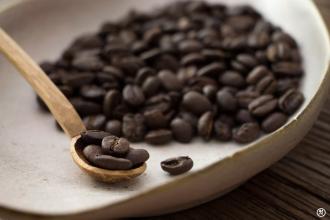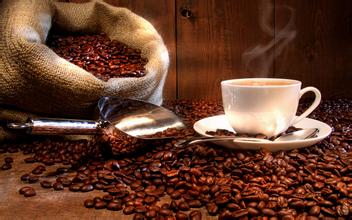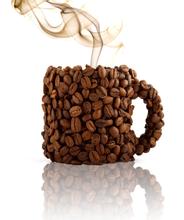Characteristics of mocha coffee beans Harald mocha coffee beans in Ethiopia
Ethiopian Harald mocha coffee bean (Ethiopian Harar mocha) roast taste and photo portrait
1 comment
Ethiopian Harald mocha coffee bean (Ethiopian Harar mocha) roast taste and photo portrait
Light roasted Harald coffee beans, brewed in a siphon coffee pot, really have a hint of citrus aroma!
This Harald harar raw coffee bean looks like grade 5, irregular, long beans (longer flat beans), short flat beans, round beans, cracked beans, mutated beans, etc., which can be regarded as an encyclopedia of coffee beans; but this is not a mix, ordinary African coffee beans, most of them are so irregular. Harald is in the sun and has less water content. This looks a little yellowish and smells a little bit of enzyme. It must be old coffee beans. However, beans can not be judged by appearance!
Ethiopia (Ethiopia, Ethiopia), latitude 6 to 9 degrees north. Tropical forests ranging from 34 to 40 degrees east longitude, 1600 to 1800 m above sea level. Ethiopia produces between 200000 and 250000 tons of coffee each year. Today, Ethiopia has become one of the largest coffee producers in the world, ranking 14th in the world and fourth in Africa. Essex is the birthplace of coffee in the world, the first country to grow coffee and maintain the oldest coffee culture, and still maintains a very traditional and ancient coffee cultivation process-a lot of forest coffee. In the sixth century, people in Ethiopia began to chew coffee with spices, and it was most common for hunters to wrap coffee in bacon as the best dry food, so that they could have enough to eat and have the spirit to hunt. So chewing coffee as a tradition. In the mid-13th century, Essex was already using pans as a tool for roasting coffee. "Mocha" is civilized as one of the earliest and once the largest coffee trade ports in the world. Located in Yemen across the Channel of Ethiopia, Ethiopian coffee was once exported through the Yemeni port of Mocha. Now the port of Mocha has dried up, but the coffee produced in the nearby area is still used to calling it mocha.
Harald coffee, which grows within 900m from the Darolebu plain to 2700 m from the highland mountain range of Chercher in eastern Ethiopia. These mountains do provide unique characteristics for these perennial coffee beans: the fruit is full and long, moderately acidic, with a typical mocha flavor. Harald Coffee is the world's leading premium coffee; although the variety is produced abroad, it gives people a friendly feel, smooth and smooth taste, giving people the rich taste of real mocha coffee. Harald coffee has almost the lowest caffeine content, about 1.13%. It is estimated that of the 52000 hectares under cultivation, the average annual production of this coffee is 26000 tons (equivalent to 430000 bags of 60 kg coffee).
Harald is not only one of the best sun-tanned coffee in the world, known as "coffee in the wilderness", but more like a beautiful legend. Harald, a name that reflects the rise and fall of Essex. At a time when the means of transport were still underdeveloped, especially when horses were the main means of transportation, high-quality thoroughbred horses became the goal that people pursued and aspired to. At this time, Essex Harald had the best thoroughbred horses in the world. So they initially classified the coffee grade as "quality coffee is as important as horses of purebred blood." So we see that the bags of raw Harald coffee beans are still printed with pictures of horses, and this traditional packaging has been maintained to this day.
Harald of Grade 5 is almost equivalent to the whole bean, and it is naturally very irregular without graded selection; it is impossible for such beans to be roasted evenly unless they are roasted very deep, lose their own characteristics, and lose most of the aroma of coffee. If you want to fully reflect the regional characteristics of raw coffee beans, it is best to choose a shallow baking degree, in order to more accurately and fully feel the flavor of coffee beans, you can use multi-stage baking method, that is, the same kind of raw coffee beans use different baking stages to compare and taste.
For the Ethiopian Harald harar coffee raw beans brought by us, we picked out the obvious defective beans, broken beans, and so on, and divided them into two halves, using cinnamon baking (beans coming out in the middle of the first explosion), Vienna roasting (roasting to the middle of the second explosion, some slightly out of oil).
Harald coffee, which is roasted with cinnamon (beans in the middle of the first explosion), is naturally a little irregular, with some wrinkles in the beans and looks ugly. The coffee powder has an implicit and pure aroma. After brewing in a siphon coffee pot, there is really an obvious hint of citrus fruit aroma, but the citrus flavor is only the aroma, and the coffee in the mouth has no citrus flavor. The sun beans look messy, but the taste is quite clean and pure, and it is relatively rich and balanced, floating with a little bitterness; the aroma is more distinctive than the taste.
Vienna baked (roasted to the middle of the second explosion, some slightly oiled) Ethiopian Harald harar coffee, first picked out the beans with different roasting degree, still brewed in a siphon coffee pot, this roasting degree is not citrus aroma (regional characteristics or light roasting), but the taste is more pure and full-bodied and balanced, and found a little chocolate flavor. Finally found a little bit of the so-called mocha chocolate feeling. To be honest, some articles that write a lot of aroma of fruit, wine, chocolate and so on, I really don't know how to taste it. If it is about the aroma of fruit, why not smell the fruit while drinking coffee. The deep-roasted Harald coffee has no citrus aroma, but it is better in taste.

Important Notice :
前街咖啡 FrontStreet Coffee has moved to new addredd:
FrontStreet Coffee Address: 315,Donghua East Road,GuangZhou
Tel:020 38364473
- Prev

Coffee from Tanzania Coffee beans from Tanzania
Coffee beans in Tanzania are of extraordinary quality. They are produced in the Mohi district near Mount Kilimanjaro. The mountains with a height of 3,000 to 6,000 feet are the most suitable areas for growing coffee. The fertile volcanic ash gives the coffee here a strong texture and soft acidity. It exudes a delicate fragrance and contains aromas of wine and fruit.
- Next

Imported mocha coffee beans the characteristics of coffee beans around the world mocha flavor coffee beans
Coffee is a product of the tropics. You may not believe that the best coffee producer in the world is in Yunnan, China.
Related
- Does Rose Summer choose Blue, Green or Red? Detailed explanation of Rose Summer Coffee plots and Classification in Panamanian Jade Manor
- What is the difference between the origin, producing area, processing plant, cooperative and manor of coffee beans?
- How fine does the espresso powder fit? how to grind the espresso?
- Sca coffee roasting degree color card coffee roasting degree 8 roasting color values what do you mean?
- The practice of lattes: how to make lattes at home
- Introduction to Indonesian Fine Coffee beans-- Java Coffee producing area of Indonesian Arabica Coffee
- How much will the flavor of light and medium roasted rose summer be expressed? What baking level is rose summer suitable for?
- Introduction to the characteristics of washing, sun-drying or wet-planing coffee commonly used in Mantenin, Indonesia
- Price characteristics of Arabica Coffee Bean Starbucks introduction to Manning Coffee Bean Taste producing area Variety Manor
- What is the authentic Yega flavor? What are the flavor characteristics of the really excellent Yejasuffi coffee beans?

